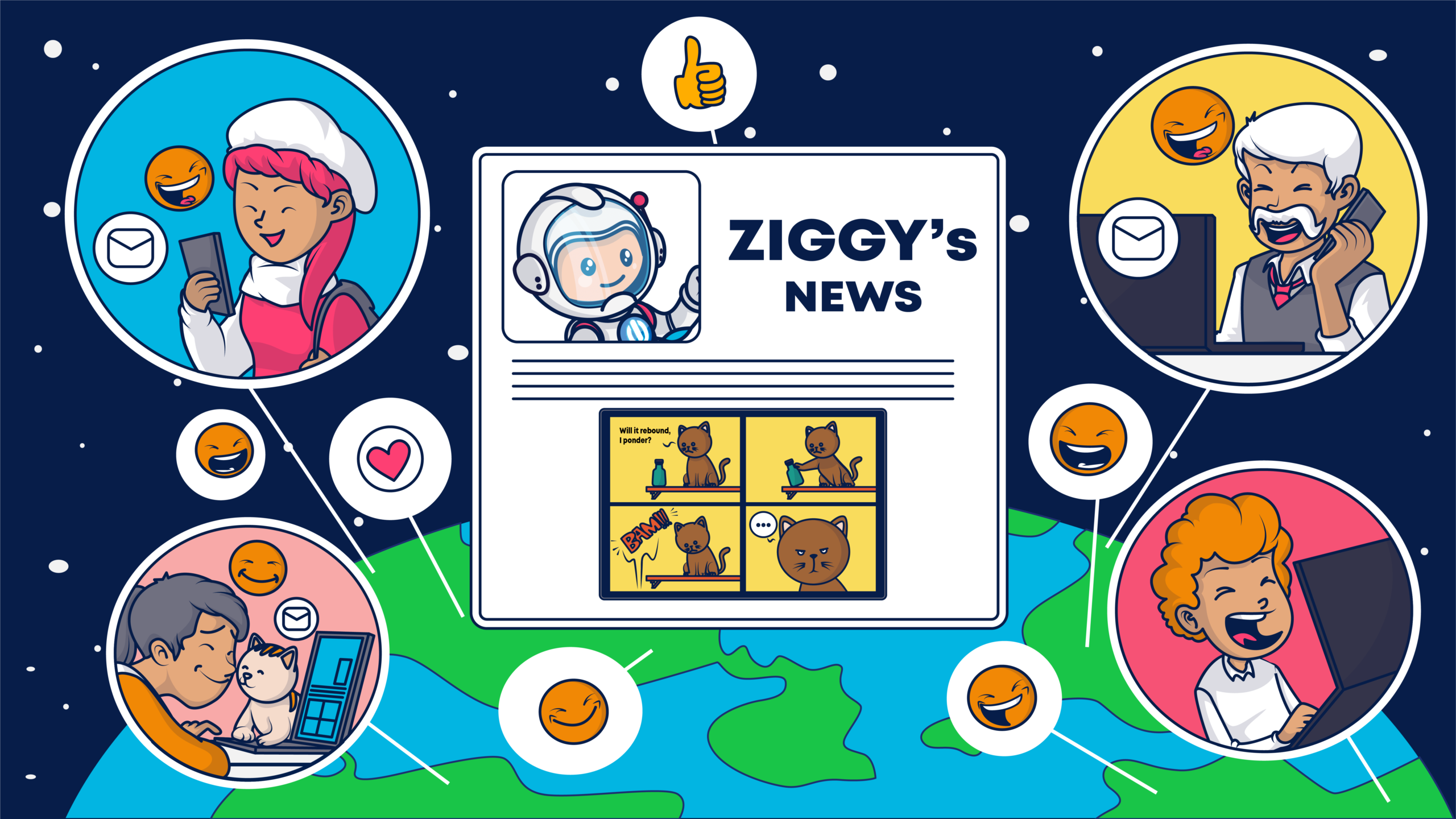Almost two years ago we said that email marketing is like marathon training. Today we can confidently say that email marketing is more intense than marathon training; it’s training for an ultramarathon. Every single month.
When you train for a marathon you have 42 kilometers of fairly straight terrain. When you train for an ultramarathon though, you have dozens of parameters to consider beyond your own pace and heart rate. Each one has a direct impact on your overall success, and that’s exactly what email marketing is like.
Today, email marketers need to examine every parameter, every KPI and every statistic they can in order to optimize campaign effectiveness, improve campaign engagement and increase overall ROI. It is so important because, when done right, email marketing is still the most effective digital marketing strategy there is, outranking the ROI of SEO, mobile and banner ads combined.
So what KPIs matter more and why? We’re about to tell you below!
The Delivery Rate
- What is it: The delivery rate is the number of emails that reach recipients’ email box out of the total emails sent.
- Why Does it Matter: Because you want your emails to reach your recipients’ email box.
- How Can you Improve it? By improving your email sender reputation.
When email marketers send out an email campaign, they often think of the subject line, the content, the send time etc. But the first thing they should think about is their sender reputation. A poor reputation will yield poor delivery results, rendering even the best campaigns ineffective if no one on the other side sees them. Factors that have a strong impact on sender reputation include IP address, SMTP vendor, domain reputation and more.
The Bounce Rate
- What is it: Your bounce rate is the number emails that could not be delivered out of the total emails sent.
- Why Does it Matter: Because, depending on the type of bounce, you could be damaging your sender reputation, reducing your delivery rate and email marketing ROI.
- How Can you Improve it? By maintaining proper list hygiene practices, monitoring delivery rates and ensuring your email marketing list consists of quality leads.
Some emails do not arrive to the recipient because the email mailbox is full, the recipient’s server is down or other reasons beyond your control – those are the soft bounces. Other emails are simply invalid – those are the hard bounces. While your SMTP may try to resend an email that encountered a soft bounce issue, hard bounce emails need to be removed from your email marketing list immediately. They impact your brand reputation and as a result, your delivery rate, campaign engagement and ROI.
The Open Rate
- What is it: The open rate is the number of emails that were actually opened out of the total emails delivered.
- Why Does it Matter: Because if your recipients don’t open their emails, they will never see your great campaigns, click through the content and convert.
- How Can You Improve it: By split testing campaigns and measuring effectiveness of different send times and subject lines.
If your sender reputation is good and your bounce rate is low, the next KPI you need to care about is your open rate. Your open rate is a key indicator of how recipients are interacting with your emails. Having a low open rate can indicate a number of things. It’s possible that your subject line is not effective, that the send time isn’t optimal, or – far worse – that you have a delivery issue.
The Click Through Rate
- What is it: The click through rate (CTR) is the number of clicks on links in your email out of the total emails delivered.
- Why Does it Matter: Because when recipients click through on an email, they are more likely to continue through the sales funnel, and ultimately convert.
- How Can You Improve it: Improve list segmentation, personalize your campaigns and test your CTAs and creatives.
The click through rate of any campaign is one of the most important metrics providing insight into the potential ROI of a campaign and one of the most challenging obstacles that email marketers face. Email marketers looking to improve ROI need to focus on the click through rate because it provides important insight into the campaign’s effectiveness. By examining how many recipients continue through the sales funnel, you can ultimately predict conversion rate and ROI. Furthermore, both CTR and open rate are indicators for engagement – the higher it is, the better your sender reputation and inboxing are.
The Lead to Conversion Rate
- What is it: The number of recipients that completed the desired action (purchased a product, completed a form etc.) out of the total emails delivered.
- Why Does it Matter: Because this is the ultimate goal of email marketers (to get their recipients to complete a particular action) and the direct impactor of your email marketing ROI.
- How Can You Improve it: By having segmented lists and split testing your content to maximize conversion potential.
For a company to increase the return on their investment, they need to generate revenue – and the way to do that is by converting leads into customers. That is why email marketers need to continually examine their conversion rate and optimize campaigns. One of the top ways to increase ROI is by hyper-segmentation which helps create the most personalized message possible for each recipient. In doing so, not only will you ensure that the content you create is relevant (thereby increasing sender reputation), but you can improve conversion and ROI.
The Unsubscribe Rate
- What is it: The number of recipients that unsubscribe from your email list out of the total emails delivered.
- Why Does it Matter: Unsubscribes mean your content isn’t engaging your users. Your list size is shrinking and potential for profit.
- How Can You Improve it: By providing recipients with relevant information and giving them control over delivery frequency.
Email marketers spend a great deal of their time increasing their database, and that is why unsubscribes can be heartbreaking to an email marketer. Not only do unsubscribes reduce your potential for revenue generation, but they are also indicative of a lack of interest in what you are promoting. That is why email marketers need to work hard to keep their content relevant and personalize emails in order to retain the recipients interest.
A great way to reduce unsubscribes and retain engagements is by providing recipients with the ability to control the frequency they receive emails (IE daily, weekly, bi monthly, quarterly etc). With this being said, a high unsubscribe rate can be beneficial for you. It means you are filtering out un-engaged users, and send your content only to those who really want to receive it.
The Complaint Rate
- What is it: The number of recipients that complain about receiving your email and mark it as spam out of the total emails delivered.
- Why Does it Matter: Being marked a spammer is one of the worst things for an email marketer since it reduces inbox placement and could result in domain suspension.
- How Can You Improve it: By making sure your list is organic (that means absolutely no list-buying), using single and even double opt-in methods, and reducing the amount of times you send emails.
Email marketers need to continually maintain their complaint rate as low as possible in order to avoid being marked a spammer (best practices recommend keeping the complaint rate below 0.1%). If the threshold is surpassed, you may find your emails going straight to the spam folder of your recipients, reducing your engagement and revenue potential and damaging your sender reputation.
Some email vendors will even suspend operation and blacklist your domain if you pass a certain complaint rate. Mailbox providers such as google and yahoo, that calculate complaint rates within their own ecosystem only, may also begin blocking your emails if too many of their users complain about your emails. To avoid being marked a spammer, make sure your unsubscribe button and frequency selector is visible (and not hidden in font 6 at the bottom). You can also use a smart opt-in system to ensure your recipients really want to be on your list.
The Revenue Per Email
- What is it: The amount of revenue generated by a particular campaign divided by the number of emails delivered.
- Why Does it Matters: Because it is one of the only statistics (save actual ROI) that is directly correlated to revenue generation.
- How Can You Improve It: By continually optimizing campaigns for effectiveness, testing CTA’s and improving segmentation.
When talking about KPIs that impact ROI, revenue generation per email is a big one. Email marketers spend their days (and probably nights) thinking of ways to improve email marketing campaigns with the ultimate goal of increasing not only conversions but actual revenue generated per mail.
The Ultra-Marathon That Never Ends
Ultimately, email marketers don’t have it easy – there are dozens of parameters and each one is important if you want to get a comprehensive view of your email operations. Email marketing platforms that have a powerful analytics platform can help you zoom in and dive deep into the various data, however it is up to the email marketers themselves (and their trusted teams) to continually optimize campaigns and see where improvements can be made.
Ongage offers email marketers a cutting edge email marketing platform that lets you drill down into data, examine KPIs over time and see how each parameter impacts your email marketing ROI.

















